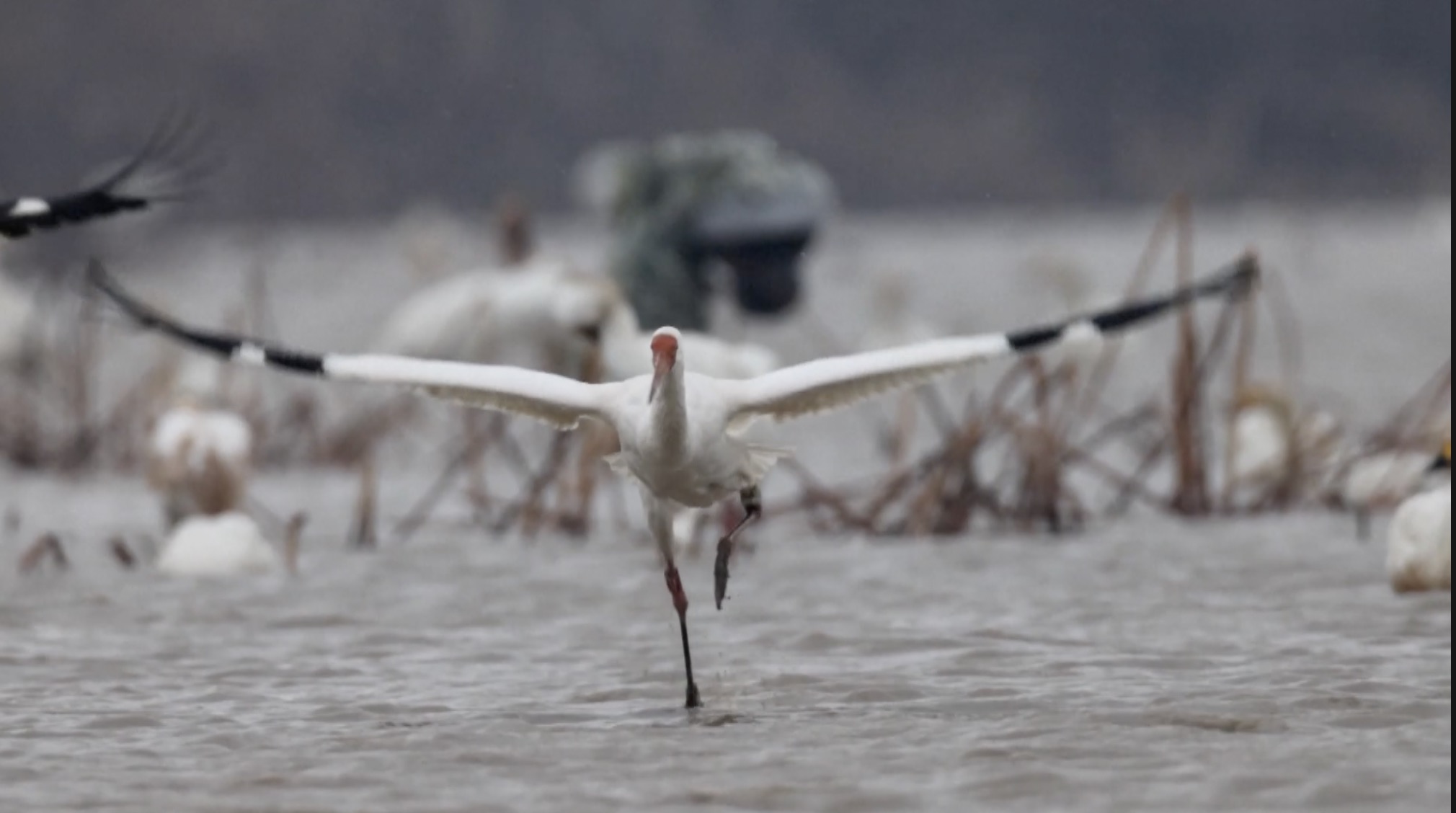00:32

A once-abandoned Siberian crane, rescued by many ecologists, struggles for acceptance by other species and then confidently reintegrates into its own group.
In a Siberian crane sanctuary beside the Poyang Lake, China's largest freshwater lake, a two-and-a-half-year-old crane named "Xiaoxue" or "Little Snow," is now settling in well, much to the delight of scientists who have carefully been monitoring this young crane's progress.
Siberian cranes, also known as snow cranes, are listed as critically endangered by the International Union for Conservation of Nature and around 98 percent of these cranes flock back to the Poyang Lake in China's eastern Jiangxi Province to spend every winter.
The story of the young crane began in October 2021 when he was just a few months old and found left alone in a small village outside of Hangzhou in east China's Zhejiang Province. The infant was in poor health after falling behind the main flock embarking on its southward migration route.
Lucky enough, the little crane was rescued by kind-hearted villagers, who looked out for the stricken bird and fed him with fish.
"There were several birds staying together when we spotted him, and the other cranes were clapping their wings and cheeping as if urging him to join them. But Xiaoxue couldn't fly, so the other birds left. We fed him with loach fish," said a villager named Zhu Yanfei.
Xiaoxue was then sent to Hangzhou Zoo where he lived a carefree life during his recuperation for more than a year, before being transported to the Wuxing Siberian crane sanctuary in Poyang last December. Here scientists hoped he would integrate with other cranes wintering there, but things didn't pan out so smoothly.
When other birds began their seasonal migration, Xiaoxue did not join them and had apparently developed a strong attachment to humans after his happy year of living at the zoo.
Scientists at the sanctuary were tasked with preparing the outcast crane for a full return to the wild.
The first thing to do was to change the bird's diet to reflect what other wild Siberian cranes usually feed on in the winter, including the buds of submerged plants such as tape grass, as well as lotus roots, fish and shrimp.
This was no easy job as researchers learned that Xiaoxue had lived solely on loaches during his stint in the zoo.
"We fed him by giving him a small bowl of loaches, and soon realized he could hardly pick up and swallow the loach. It meant if we released him to the nature, he would starve as it was impossible for him to catch any wild loach from the lake. Therefore, we had to change his diet," said Zhou Haiyan, head of the sanctuary.
In early January this year, Xiaoxue was again primed and ready to embrace his independent life in the wild, but things sadly took a wrong turn yet again - as the hapless crane was mercilessly bullied by his peers.
"Every time Xiaoxue showed up, a couple of crane families just rushed over and attacked him. He was literally hit 11 times in just two and a half minutes after he was there. I think he must have felt desperate at that time. We were worried too to see him like that," Zhou said.
"But, everything is different after a while, as Xiaoxue looked up and chirped like how the other Siberian cranes do. It turns out Xiaoxue learned how to talk to others in their own language, as if he was asking them to stay away from his spot, together with his body language. We were so relieved to see the progress," Zhou added.
The crane was growing in confidence and had claimed his own patch of territory, and he had also come to master the intricate social rules of the cranes.
(If you have specific expertise and want to contribute, or if you have a topic of interest that you'd like to share with us, please email us at nature@cgtn.com.)


